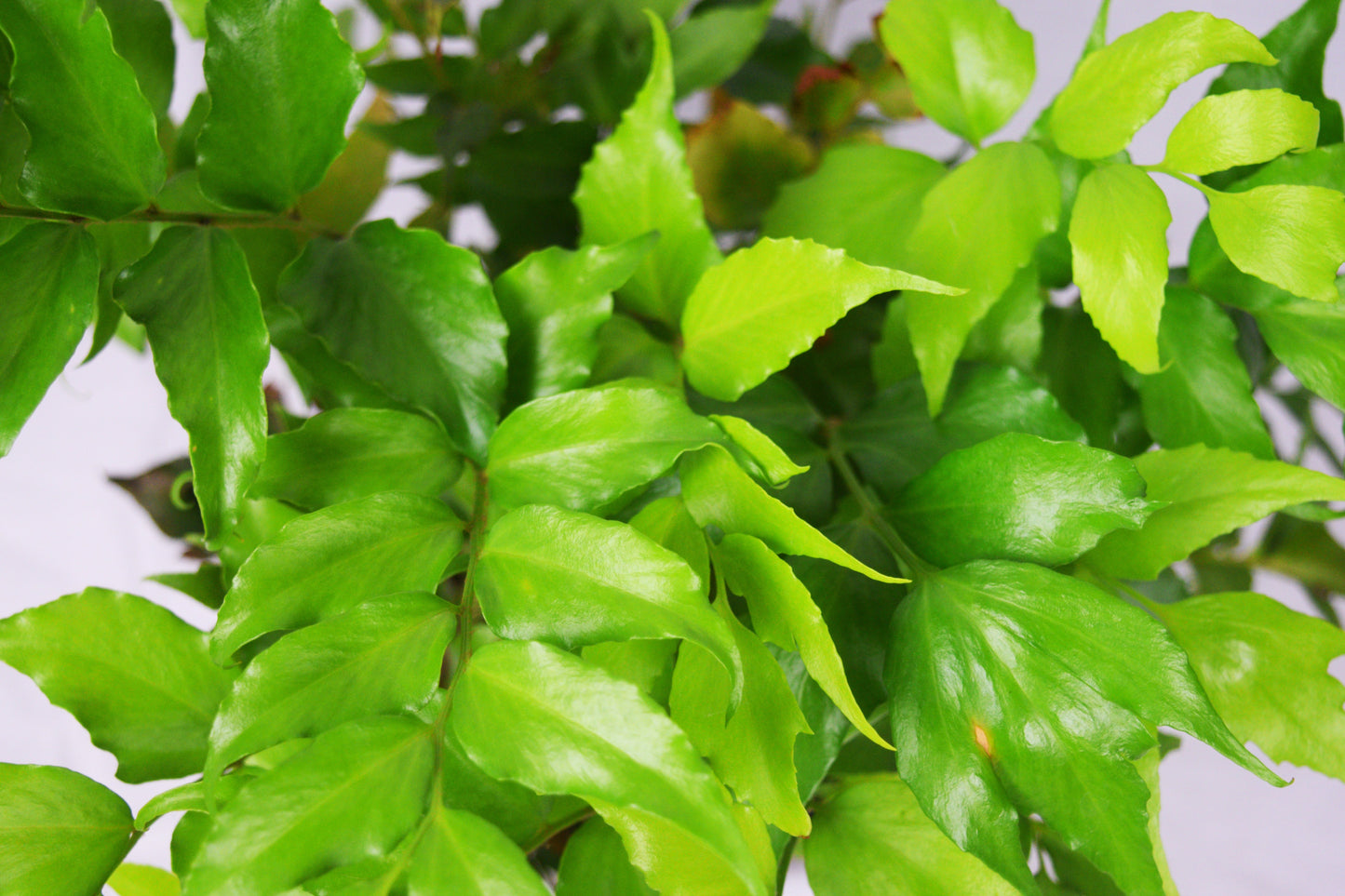Holly Fern
Holly Fern
5.0 / 5.0
(3) 3 total reviews
Couldn't load pickup availability
![]() Get it between -
Get it between -
6, 7, 8, 9, and 10
Description
Description
A popular style of fern due to its incredibly handsome, holly-like foliage that is combined with serious hardiness allowing it to thrive in conditions that are difficult for most plants to even grow in. Thicker than other types of fern, the Holly Fern stands up well to strong breezes, like coastal breezes, much better than other varieties; it also survives well in salty air or saline water making it great for areas near the sea. With tall and stiff fronds of leaflets that are much more holly-like than fern-like with coarse and fringed edges, the Holly Fern is best placed in full to partial shade in a border, as groundcover, in a rock garden or in its own container so you can move it at your leisure. Just water your Holly Fern regularly and well during the first growing season to establish a good root system, then simply water it regularly and enjoy the beauty.
Shipping & Returns
Shipping & Returns
Shipping:
Shipping live plants sometimes has its challenges when dealing with inclement weather but we strive to have every single order shipped out on their scheduled shipping date. Most orders will be scheduled to ship within 1-2 weeks of ordering. Because a plant needs TLC we only ship out on Mondays-Wednesdays to ensure the plants aren’t stationed somewhere over the weekend with no water or sunlight.
When to Ship:
We can ship out plants at anytime of the year pruned or not pruned, cold or not cold. Each plant’s durabilty is different so we recommend having them shipped in their designated season but we will still ship your plant to you earlier if you choose so.
Returns:
Because plants are perishable they cannot be returned without prior permission. We work hard to ensure all plants arrive healthy, but on rare occasions issues with the plant health upon delivery do arise.
Every single shipped plant is healthy upon departing our facility but if a plant is received in poor health contact us immediately so that we can assess the problem and work on saving the plant. We will first need a photo of the plant to start a claim. If we determine your plant cannot be recovered we will send you a replacement immediately. If notified of the plants health within 4 days we will send a replacement 100% free of charge.
If you determine the plant not to be healthy 4 days after delivery you can contact us and we will issue a 50% store credit.
30 days after delivery we cannot be held responsible for the current health of the plant.
Wholesale & Bulk Orders
Wholesale & Bulk Orders
To get started or learn more about our wholesale program and pricing please complete this form.





Questions & Answers
Have a Question?
-
What type of soil conditions/ph and fertilizer does it require?
Prefers rich, well-drained soil with a slightly acidic to neutral pH (5.5–7.0); use balanced fertilizer.
-
Is holly fern native to ga
No, but it grows well there.
-
Does Holly Feen planted outside have to b covered in cold temps or a freeze? I live in Dallas TX.
Yes, cover it in freezing temperatures for protection
-
I need to know what zones
Cyrtomium falcatum (Holly Fern) thrives in zones 6-11.
-
How tall does it grow and how wide
Grows 1.5–2 feet tall and 2–3 feet wide.
-
What is the scientific name
Cyrtomium falcatum.
-
What is the cold hardiness sound of this plant? Will it survive in zone four?
No, a Holly Fern (Cyrtomium falcatum) is not suitable for Zone 4 winters. Holly Ferns typically thrive in USDA Zones 6-11, as they are sensitive to cold temperatures. Zone 4 winters are too harsh for this fern to survive outdoors without significant protection. If you're in Zone 4, consider bringing the plant indoors or choosing a more cold-hardy fern variety.
-
Does it grow during winter
Yes, Holly Fern (Cyrtomium falcatum) can grow during the winter in mild climates, typically in USDA Zones 6 to 10. This evergreen fern maintains its green fronds through winter in warmer regions. In colder areas, its growth may slow, but the fronds usually stay intact unless temperatures drop significantly. For optimal winter growth, plant it in a shady, well-drained area with some moisture, as too much sun or dry soil may cause fronds to brown or wilt.
-
Are holly ferns deer resistant
Yes, Holly Ferns (Cyrtomium falcatum) are generally considered deer-resistant. Deer tend to avoid plants with tough, leathery leaves or plants that have a strong taste or odor, and Holly Ferns fall into this category. Their coarse texture and glossy, spiny-edged leaves make them less appealing to deer.
However, it's important to note that no plant is completely deer-proof. In times of food scarcity, such as during harsh winters, deer may still nibble on plants they would typically avoid. But in general, Holly Ferns are a good choice if you're looking to plant something less likely to be eaten by deer.
-
If new growth is mixed in with dead can you prune to ground
Yes, you can prune holly fern to the ground in early spring; it will regrow.
very good size...a little crushed with shipping....but best i have come across on the net.
My fern arrived in good shape, large enough for the space, and to join my garden family.
Received in excellent condition, quality plants.
Thank you






